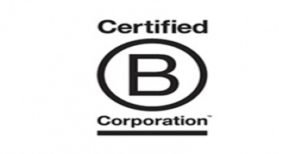Six Sigma is a business management methodology aimed at reducing defects, improving processes, and enhancing overall quality and efficiency. Developed by Motorola in the 1980s, it has gained popularity in various industries worldwide. In this analysis, we will explore pros and cons of Six Sigma to understand its potential benefits and challenges.
Pros:
- Quality improvement: Six Sigma focuses on identifying and eliminating defects, leading to improved product and service quality.
- Customer satisfaction: By reducing defects and improving quality, Six Sigma enhances customer satisfaction and loyalty.
- Data-driven decision-making: Six Sigma relies on data analysis and metrics to make informed business decisions.
- Process efficiency: Through process optimization and waste reduction, Six Sigma improves operational efficiency.
- Cost savings: Six Sigma helps organizations identify and eliminate costly errors, leading to financial savings.
- Reduced variability: By minimizing process variation, Six Sigma ensures consistent and predictable outcomes.
- Employee engagement: Six Sigma involves employees at all levels, fostering a culture of continuous improvement and engagement.
- Training and development: Six Sigma provides employees with valuable training and development opportunities.
- Clear performance metrics: Six Sigma defines clear performance metrics, enabling organizations to measure progress and success.
- Risk mitigation: Six Sigma identifies potential risks and provides tools to mitigate them effectively.
- Standardized processes: Six Sigma promotes standardization, leading to consistent and replicable processes.
- Cross-functional collaboration: Six Sigma encourages collaboration across departments, promoting a holistic approach to problem-solving.
- Strong problem-solving methodology: Six Sigma provides a structured problem-solving framework (DMAIC) for addressing issues.
- Process transparency: Six Sigma enhances process transparency, enabling organizations to identify bottlenecks and inefficiencies.
- Continuous improvement culture: Six Sigma cultivates a culture of continuous improvement and learning.
- Enhanced decision-making capabilities: Six Sigma equips employees with tools and methodologies to make data-driven decisions.
- Improved supplier relationships: Six Sigma emphasizes collaboration with suppliers to ensure high-quality inputs.
- Greater accountability: Six Sigma promotes accountability at all levels, ensuring ownership and responsibility for quality outcomes.
- Effective change management: Six Sigma facilitates effective change management, minimizing resistance to process changes.
- Competitive advantage: Six Sigma provides a competitive edge by delivering superior quality products and services.
Cons:
- Resource-intensive implementation: Implementing Six Sigma requires significant time, effort, and resources.
- Rigid methodology: Six Sigma’s strict methodology may limit flexibility in certain dynamic environments.
- Complexity: Six Sigma can be complex, requiring extensive training and expertise to implement effectively.
- Resistance to change: Some employees may resist the changes introduced through Six Sigma initiatives.
- Narrow focus on process improvement: Six Sigma primarily focuses on process improvement and may overlook broader strategic aspects.
- Overemphasis on metrics: Overreliance on metrics may lead to a narrow view of success, neglecting other qualitative aspects.
- Potential for overcomplication: Six Sigma’s structured approach may lead to overcomplication of simple processes.
- Lack of adaptability to unique situations: The standardized approach of Six Sigma may not be suitable for all unique situations or industries.
- Time-consuming data collection: Collecting and analyzing data for Six Sigma projects can be time-consuming.
- Resistance from organizational culture: Implementing Six Sigma may face resistance from existing organizational cultures and structures.
- Risk of employee burnout: The high emphasis on performance and continuous improvement may lead to employee burnout.
- Limited focus on innovation: Six Sigma’s focus on process improvement may leave limited room for innovation.
- Potential for metric manipulation: The emphasis on meeting performance metrics may create incentives for metric manipulation.
- Misalignment with customer needs: Six Sigma may prioritize internal process improvement over customer-centric approaches.
- Limited applicability in creative fields: The structured approach of Six Sigma may not be as applicable in creative industries.
- Inadequate consideration of human factors: Six Sigma may not adequately account for the impact of human factors on processes.
- Dependency on leadership support: Successful implementation of Six Sigma requires strong leadership support and commitment.
- Potential for narrow problem definition: The focus on specific problem areas may result in a narrow definition of problems.
- Risk of neglecting long-term strategic planning: The emphasis on short-term process improvement may neglect long-term strategic planning.
- Possible resistance from customers: Customers may perceive excessive process focus as impersonal or lacking customization.
Pros
- Quality improvement
- Customer satisfaction
- Data-driven decision-making
- Process efficiency
- Cost savings
- Reduced variability
- Employee engagement
- Training and development
- Clear performance metrics
- Risk mitigation
- Standardized processes
- Cross-functional collaboration
- Strong problem-solving methodology
- Process transparency
- Continuous improvement culture
- Enhanced decision-making capabilities
- Improved supplier relationships
- Greater accountability
- Effective change management
- Competitive advantage
Cons
- Resource-intensive implementation
- Rigid methodology
- Complexity
- Resistance to change
- Narrow focus on process improvement
- Overemphasis on metrics
- Potential for overcomplication
- Lack of adaptability to unique situations
- Time-consuming data collection
- Resistance from organizational culture
- Risk of employee burnout
- Limited focus on innovation
- Potential for metric manipulation
- Misalignment with customer needs
- Limited applicability in creative fields
- Inadequate consideration of human factors
- Dependency on leadership support
- Potential for narrow problem definition
- Risk of neglecting long-term strategic planning
- Possible resistance from customers



